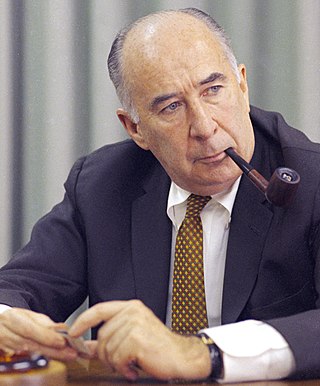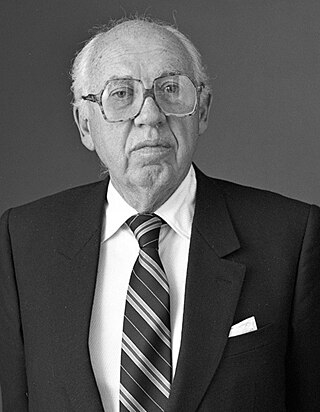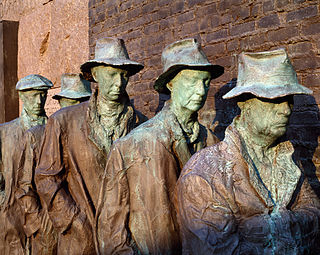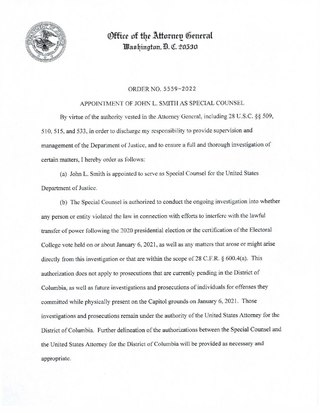Related Research Articles

The Watergate scandal was a major political controversy in the United States during the presidency of Richard Nixon from 1972 to 1974, ultimately resulting in Nixon's resignation. The name originated from attempts by the Nixon administration to conceal its involvement in the June 17, 1972 break-in at the Democratic National Committee headquarters located in the Watergate Office Building in Washington, D.C.

John Newton Mitchell was the 67th Attorney General of the United States, serving under President Richard Nixon and was chairman of Nixon's 1968 and 1972 presidential campaigns. Prior to that, he had been a municipal bond lawyer and one of Nixon's associates. He was tried and convicted as a result of his involvement in the Watergate scandal.

William Joseph Casey was an American lawyer who was the Director of Central Intelligence from 1981 to 1987. In this capacity he oversaw the entire United States Intelligence Community and personally directed the Central Intelligence Agency (CIA).
Executive privilege is the right of the president of the United States and other members of the executive branch to maintain confidential communications under certain circumstances within the executive branch and to resist some subpoenas and other oversight by the legislative and judicial branches of government in pursuit of particular information or personnel relating to those confidential communications. The right comes into effect when revealing the information would impair governmental functions. Neither executive privilege nor the oversight power of Congress is explicitly mentioned in the United States Constitution. However, the Supreme Court of the United States has ruled that executive privilege and congressional oversight each are a consequence of the doctrine of the separation of powers, derived from the supremacy of each branch in its area of constitutional activity.
Ray Garrett Jr. was a senior partner at Gardner Carton & Douglas in Chicago until his appointment as the Chairman of the U.S. Securities and Exchange Commission (SEC) under President Richard Nixon in 1973, where he served for two years.
Herbert Warren Kalmbach was an American attorney and banker. He served as the personal attorney to United States President Richard Nixon (1968–1973). He became embroiled in the Watergate scandal due to his fundraising activities in the early 1970s, some of which supported undercover operatives directed by senior White House figures under Nixon. Kalmbach was convicted and served 191 days in jail for his part in the scandal, and lost his license to practice law for a time, although he was later reinstated.

John Wesley Dean III is a disbarred American attorney who served as White House Counsel for U.S. President Richard Nixon from July 1970 until April 1973. Dean is known for his role in the cover-up of the Watergate scandal and his subsequent testimony to Congress as a witness. His guilty plea to a single felony in exchange for becoming a key witness for the prosecution ultimately resulted in a reduced sentence, which he served at Fort Holabird outside Baltimore, Maryland. After his plea, he was disbarred.
Robert Lee Vesco was an American criminal financier. After several years of risky investments and dubious credit dealings, Vesco was alleged to have committed securities fraud. He immediately fled the ensuing U.S. Securities and Exchange Commission investigation by living in a number of Central American and Caribbean countries.

The Watergate scandal refers to the burglary and illegal wiretapping of the headquarters of the Democratic National Committee, in the Watergate complex by members of President Richard Nixon's re-election campaign, and the subsequent cover-up of the break-in resulting in Nixon's resignation on August 9, 1974, as well as other abuses of power by the Nixon White House that were discovered during the course of the scandal.

The Pecora Investigation was an inquiry begun on March 4, 1932, by the United States Senate Committee on Banking and Currency to investigate the causes of the Wall Street Crash of 1929. The name refers to the fourth and final chief counsel for the investigation, Ferdinand Pecora. His exposure of abusive practices in the financial industry galvanized broad public support for stricter regulations. As a result, the U.S. Congress passed the Glass–Steagall Banking Act of 1933, the Securities Act of 1933, and the Securities Exchange Act of 1934.

Edward Calvert Nixon was an American entrepreneur and naval aviator. He was the youngest brother of U.S. President Richard Nixon.

Andrew Neill Vollmer is an American lawyer. He retired as partner in the securities department at law firm WilmerHale. Prior to April 2009, he had been Deputy General Counsel for the United States Securities and Exchange Commission (SEC) and acting General Counsel. He succeeded Meyer Eisenberg as Deputy General Counsel, who retired from the Commission in early January 2006 and former General Counsel Brian Cartwright who left the Commission for the private sector in January 2009.
Harry Lloyd Sears was an American lawyer and Republican Party politician who served for 10 years in the New Jersey Legislature. As State Majority Leader he was the Chairman of the New Jersey Committee to re-elect President Richard Nixon (R). He was also legal counsel for the International Controls Corporation, run by Robert Vesco which was under investigation by the Securities Exchange Commission. Sears delivered $200,000 in cash from Vesco who had secretly contributed it to Nixon's Committee for the Re-Election of the President (CREEP). Sears was indicted on charges of bribery and conspiracy, but was granted immunity in return for his testimony which eventually led to Watergate and the resignation of Nixon.
International Controls Corporation (ICC) was an American holding company incorporated in 1965. Before being taken private in 1997, its subsidiaries included Checker Motors Corporation and Great Dane Trailers. It had previously been forced to liquidate many of its holdings after charges of massive securities fraud against the company's founder, fugitive financier Robert Vesco.
Whitney North Seymour Jr., known to friends as Mike Seymour, was an American politician and attorney from New York City. Born to a prominent family, Seymour graduated from Princeton University and Yale Law School and served in the United States Army during World War II. He served in the New York State Senate from 1966 to 1968 and as U.S. Attorney for the Southern District of New York from 1970 to 1973.
David M. Becker is an American lawyer and a partner of Cleary Gottlieb. He was twice General Counsel and Senior Policy Director of the United States Securities and Exchange Commission (SEC)
Stanley William Penn is an American former journalist who spent much of his career at the Wall Street Journal. In 1967, he won a Pulitzer Prize for National Affairs Reporting.
Chester T. Lane (1905–1959) was counsel to the newly formed Security and Exchange Commission, a Lend-Lease administrator, and later, as a partner at Beer, Richards, Lane, Haller & Buttenwieser, served as defense counsel to Alger Hiss during appeal.
Mir Mohammad Ali khan also known as MirMak, is a Pakistani stockbroker and a fugitive who is known for allegedly misappropriating millions of dollars from multiple clients of his brokerage firm, among them individuals associated with the Gambino crime family.

An ongoing special counsel investigation was opened by U.S. Attorney General Merrick Garland on November 18, 2022, to continue two investigations initiated by the Justice Department (DOJ) regarding former U.S. President Donald Trump. Garland appointed Jack Smith, a longtime federal prosecutor, to lead the independent investigations. Smith was tasked with investigating Trump's role in the January 6 United States Capitol attack and Trump's mishandling of government records, including classified documents.
References
- 1 2 3 The International Who's Who, 1983-84. London: Europa Publications Ltd., 1984, p. 274.
- 1 2 Interview with G. Bradford Cook. Interview conducted by Kenneth Durr. Securities and Exchange Commission Historical Society. May 8, 2007, p. 1. Accessed 2011-11-21.
- 1 2 3 4 "Chicagoan Is Named Top S.E.C. Counsel." New York Times. September 8, 1971.
- ↑ Interview with G. Bradford Cook. Interview conducted by Kenneth Durr. Securities and Exchange Commission Historical Society. May 8, 2007, p. 1-2. Accessed 2011-11-21.
- ↑ "Laura S. Armour Is Wed in Illinois to George Cook." New York Times. January 23, 1966.
- 1 2 "Jennifer Cook, Bish McDonnell." New York Times. October 6, 2002. Accessed 2013-11-21.
- 1 2 Interview with G. Bradford Cook. Interview conducted by Kenneth Durr. Securities and Exchange Commission Historical Society. May 8, 2007, p. 4. Accessed 2011-11-21.
- ↑ Interview with G. Bradford Cook. Interview conducted by Kenneth Durr. Securities and Exchange Commission Historical Society. May 8, 2007, p. 4-6. Accessed 2011-11-21.
- ↑ Interview with G. Bradford Cook. Interview conducted by Kenneth Durr. Securities and Exchange Commission Historical Society. May 8, 2007, p. 11. Accessed 2011-11-21.
- ↑ Interview with G. Bradford Cook. Interview conducted by Kenneth Durr. Securities and Exchange Commission Historical Society. May 8, 2007, p. 15. Accessed 2011-11-21.
- ↑ Interview with G. Bradford Cook. Interview conducted by Kenneth Durr. Securities and Exchange Commission Historical Society. May 8, 2007, p. 19. Accessed 2011-11-21.
- ↑ King, Harriet. "'Born to Be a Chief Exec'." New York Times. July 17, 1977.
- ↑ Belair Jr., Felix. "Cook Sworn as Chief of S.E.C." New York Times. March 4, 1973.
- ↑ Interview with G. Bradford Cook. Interview conducted by Kenneth Durr. Securities and Exchange Commission Historical Society. May 8, 2007, p. 26. Accessed 2011-11-21.
- 1 2 Interview with G. Bradford Cook. Interview conducted by Kenneth Durr. Securities and Exchange Commission Historical Society. May 8, 2007, p. 27. Accessed 2011-11-21.
- 1 2 3 4 Arnold, Martin. "Cook Says Chat With Stans Led to Shift in Vesco Suit." New York Times. March 28, 1974.
- 1 2 Cole, Robert J. "Nixon's Brother Called In Inquiry." New York Times. March 5, 1973.
- ↑ Cole, Robert J. "The $200,000 Misunderstanding." New York Times. March 11, 1973; Madden, Richard L. "Grand Jury Nears End of Investigation on Tangled Vesco Case." New York Times. April 28, 1973; Tolchin, Martin. "Vesco Asks Total Immunity to Testify." New York Times. May 5, 1973.
- 1 2 "Casey Says He Did Not Know of Any Mishandling on Vesco." New York Times. May 18, 1973.
- 1 2 3 Madden, Richard L. "Post Held 74 Days." New York Times. May 17, 1973.
- 1 2 Arnold, Martin. "Cook Says Stans Told Him He Lied to the Grand Jury." New York Times. March 29, 1974.
- 1 2 Arnold, Martin. "Cook Concedes More Lies Relating to Vesco Inquiry." New York Times. March 30, 1974.
- ↑ "Cook Quoted as Saying He Quit S.E.C. in Fear of Impeachment." New York Times. May 26, 1973.
- ↑ Lubasch, Arnold H. "Trial of Mitchell and Stans Starts Here Today." New York Times. February 19, 1974.
- ↑ Chambers, Marcia. "Jurors Couldn't Believe Federal Witnesses." New York Times. April 29, 1974.
- ↑ Belair Jr., Felix. "Senators Back Plea for Action On Lies by Ex-Chief of S.E.C." New York Times. June 6, 1974.
- ↑ "Cook, Former S.E.C. Chief, Cited in Bar Complaint." New York Times. September 28, 1974.
- ↑ "Notes on People." New York Times. July 25, 1975.
- ↑ "Supreme Court Bars Cook Ex-S.E.C. Head." New York Times. June 1, 1977.
- ↑ "Cook Barred in Illinois Law Action." New York Times. June 2, 1977.
- ↑ "Cook, George Bradford". Lincoln Journal Star. September 7, 2014. Retrieved June 15, 2020; Arnold, Lawrence (June 12, 2020). "Why We're Telling You Now About This SEC Chairman's 2014 Death". Bloomberg. Retrieved June 15, 2020.
